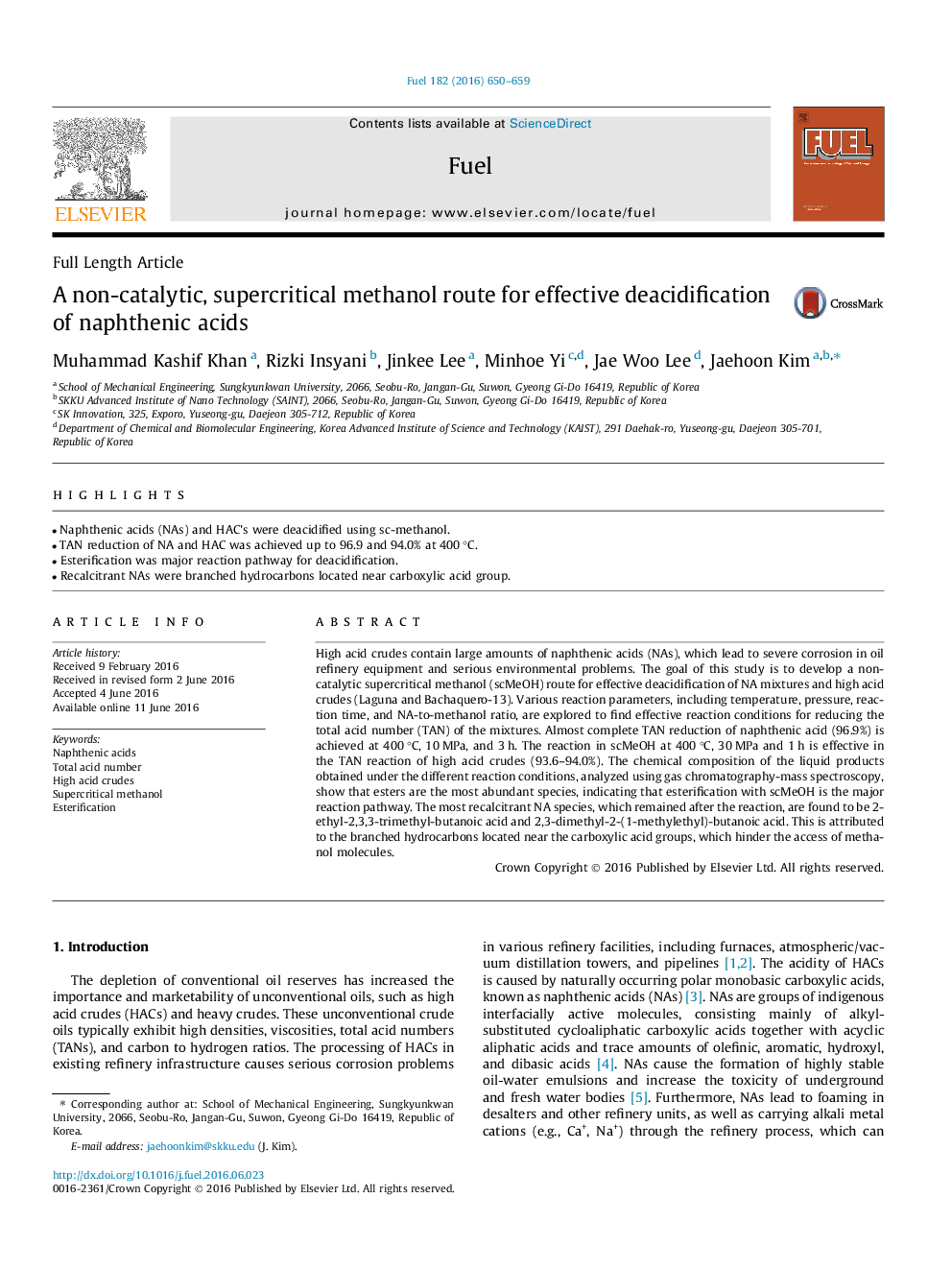| Article ID | Journal | Published Year | Pages | File Type |
|---|---|---|---|---|
| 6633524 | Fuel | 2016 | 10 Pages |
Abstract
High acid crudes contain large amounts of naphthenic acids (NAs), which lead to severe corrosion in oil refinery equipment and serious environmental problems. The goal of this study is to develop a non-catalytic supercritical methanol (scMeOH) route for effective deacidification of NA mixtures and high acid crudes (Laguna and Bachaquero-13). Various reaction parameters, including temperature, pressure, reaction time, and NA-to-methanol ratio, are explored to find effective reaction conditions for reducing the total acid number (TAN) of the mixtures. Almost complete TAN reduction of naphthenic acid (96.9%) is achieved at 400 °C, 10 MPa, and 3 h. The reaction in scMeOH at 400 °C, 30 MPa and 1 h is effective in the TAN reaction of high acid crudes (93.6-94.0%). The chemical composition of the liquid products obtained under the different reaction conditions, analyzed using gas chromatography-mass spectroscopy, show that esters are the most abundant species, indicating that esterification with scMeOH is the major reaction pathway. The most recalcitrant NA species, which remained after the reaction, are found to be 2-ethyl-2,3,3-trimethyl-butanoic acid and 2,3-dimethyl-2-(1-methylethyl)-butanoic acid. This is attributed to the branched hydrocarbons located near the carboxylic acid groups, which hinder the access of methanol molecules.
Related Topics
Physical Sciences and Engineering
Chemical Engineering
Chemical Engineering (General)
Authors
Muhammad Kashif Khan, Rizki Insyani, Jinkee Lee, Minhoe Yi, Jae Woo Lee, Jaehoon Kim,
